Arondéus, Willem Johan ‘Smit” Cornelis, born 22-08-1894, in Naarden, 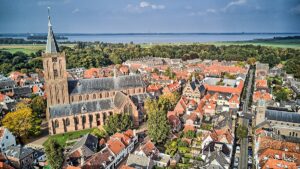 Gooise Meren Municipality, Noord-Holland, Netherlands, to Hendrik Cornelis Arondéus and Catharina Wilhelmina, born de Vries.
Gooise Meren Municipality, Noord-Holland, Netherlands, to Hendrik Cornelis Arondéus and Catharina Wilhelmina, born de Vries.  One of six children, Willem grew up in Amsterdam where his parents were theater costume designers. When Willem was 17, he fought with his parents about his homosexuality. He left home and severed contact with his family. He began writing and painting, and in 1932 he moved to the countryside near Apeldoorn.
One of six children, Willem grew up in Amsterdam where his parents were theater costume designers. When Willem was 17, he fought with his parents about his homosexuality. He left home and severed contact with his family. He began writing and painting, and in 1932 he moved to the countryside near Apeldoorn.
Willem started working as an illustrator, designer of posters and tapestries and a painter. In 1923 he was commissioned to paint a large mural for Rotterdam City Hall.  During that same period, he illustrated poems by J. H. Leopold, Pieter Cornelis Boutens and Martinus Nijhoff. Willem admired the older Dutch designer Richard Roland Holst,
During that same period, he illustrated poems by J. H. Leopold, Pieter Cornelis Boutens and Martinus Nijhoff. Willem admired the older Dutch designer Richard Roland Holst,  as can be seen in his work. He did not attain much fame and lived in impoverished circumstances.
as can be seen in his work. He did not attain much fame and lived in impoverished circumstances.
 Arondéus on holiday on the island of Urk, 1921.
Arondéus on holiday on the island of Urk, 1921.
Around 1935, he gave up visual arts and became an author. The poems and stories he had written in the 1920s went unpublished, but in the year 1938 he published two novels, Het Uilenhuis (‘The Owls House’) and In de bloeiende Ramenas (‘In the Blossoming Winter Radish’), both illustrated with designs by Arondéus himself. The year 1939 saw the publication of his Matthijs Maris: de tragiek van den droom (‘The Tragedy of the Dream’), a biography of the painter Matthijs Maris,  who was a brother of the Dutch artists Jacob
who was a brother of the Dutch artists Jacob  and Willem Maris.
and Willem Maris.  Two years later,Figuren en problemen der monumentale schilderkunst in Nederland(‘Figures and Problems of Monumental Painting in the Netherlands’) was published, again with designs by the author. At that date, however, Arondéus was already involved with the Dutch resistance movement.
Two years later,Figuren en problemen der monumentale schilderkunst in Nederland(‘Figures and Problems of Monumental Painting in the Netherlands’) was published, again with designs by the author. At that date, however, Arondéus was already involved with the Dutch resistance movement.
In 1942, Arondéus started an underground periodical called the Brandarisbrief. In 1943, the Brandarisbrief merged with another publication called De Vrije Kunstenaar. Through the merger, Arondéus met Gerrit van der Veen,
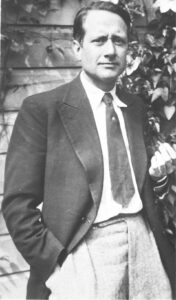
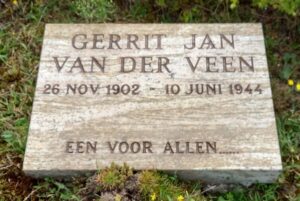 the editor of De Vrije Kunstenaar. In the resistance, van der Veen specialized in forging identity cards. As a result, Arondéus also became involved in creating forged documents, along with lesbian resistant Frieda Belinfante.
the editor of De Vrije Kunstenaar. In the resistance, van der Veen specialized in forging identity cards. As a result, Arondéus also became involved in creating forged documents, along with lesbian resistant Frieda Belinfante. 
 She survived the war and passed away 26-04-1995 (age 90) in Santa Fe, Santa Fe County, New Mexico, United States.
She survived the war and passed away 26-04-1995 (age 90) in Santa Fe, Santa Fe County, New Mexico, United States.
A major detriment to the success of these forgeries was the Municipal Office for Population Registration as its existence made the forgeries less useful, since their legitimacy could be checked against the registration lists and determined to be fakes. Arondéus and van der Veen, along with a number of associates, developed a plan to destroy the registration office. 

Their attack, which took place on 27-03-1943, was partially successful, and they managed to destroy 800,000 identity cards (15% of the records, and retrieve 600 blank cards and 50,000 guilders. The building was blown up and no one was caught on the night of the attack. However, due to an unknown betrayer, Arondéus was arrested on 01-04-1943. Arondéus refused to give up the rest of his team but his notebook was found, and as a result, a majority of the group were also arrested. Belinfante was the sole person from the group to have survived, forcing her to take on a man’s identity and go undercover.
Death and burial ground of Arondéus, Willem Johan “Smit” Cornelis.




On 18-06-1943, Arondéus was tried and sentenced to death, along with 13 other men who participated. Two of the group received clemency, but the others were executed on 01-07-1943.  Arondéus pleaded guilty and took the full blame, which may be why two young doctors were spared from execution and given custodial sentences instead. Before his execution, Arondéus made a point of ensuring the public would be aware that he and two other men in the group, Sjoerd Bakker
Arondéus pleaded guilty and took the full blame, which may be why two young doctors were spared from execution and given custodial sentences instead. Before his execution, Arondéus made a point of ensuring the public would be aware that he and two other men in the group, Sjoerd Bakker 
 and Gerardus Hendrik “Ge” Brouwer
and Gerardus Hendrik “Ge” Brouwer 
 , were gay, asking either a friend or his lawyer (accounts vary) to “Tell people that homosexuals are not cowards.”
, were gay, asking either a friend or his lawyer (accounts vary) to “Tell people that homosexuals are not cowards.”
Couturier Sjoerd Bakker, born 10-06-1915, came from a large Frisian family, whose sons were (latently) homosexual and later joined the resistance. Sjoerd made the police uniforms used in the 1943 raid on the population registry.
Gerard (Gé) Hendrik Brouwer was born on 06-05-1912, in Rotterdam. He was the son of Aart Brouwer and Elske Johanna, born de Voogt. He had a younger brother, Aat.  Aat survived the war and passed away on September 02-09-1988, age 66, in Katwijk.
Aat survived the war and passed away on September 02-09-1988, age 66, in Katwijk.
On 16-03-1942, the Brittenburg Group, a group of young Katwijk residents, was arrested. This was because a member of the group had spilled the beans. They had hidden weapons they had found in the dunes. Among them were Gerard Huijsman 
 , Gerard, and Aat Brouwer.
, Gerard, and Aat Brouwer.
In 1945, after the liberation of the Netherlands, Arondéus’s family was awarded a posthumous medal ![]() by the Dutch government in his honour. In 1984, he was awarded the Resistance Memorial Cross.
by the Dutch government in his honour. In 1984, he was awarded the Resistance Memorial Cross. ![]() On 19-06-1986, Yad Vashem recognized Arondéus as Righteous Among the Nations
On 19-06-1986, Yad Vashem recognized Arondéus as Righteous Among the Nations ![]() .
.
Arondéus, Willem Johan “Smit” Cornelis is buried at the Honorary Cemetery, in Overveen, Bloemendaal Municipality, Noord-Holland, Netherlands, Section, Grave VI, Stele 5.
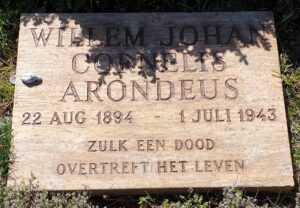
Message(s), tips or interesting graves for the webmaster: robhopmans@outlook.com














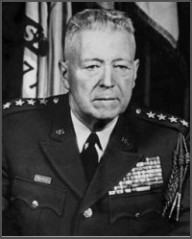




Leave a Reply